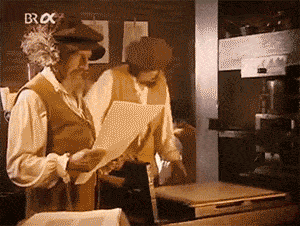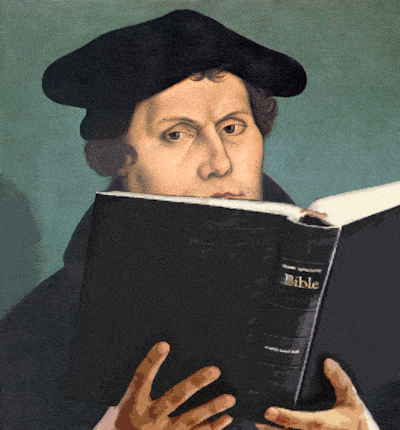From the Printing Press to Cat Videos
Each morning, our alarms sound, and we wake up, sometimes begrudgingly. And, if we’re honest, most of us instinctively reach for our phones. Without thinking, we scan the notifications on our lock screens.
Joe sent you an email at 2:14 A.M. ‘You have to read this article! Remember to…’
34 people likes your Instagram post.
Washington Post: ‘You’ll never guess what the President tweeted!’
Karen tagged you in a video on Facebook.
Jeff: 2 iMessages
Sandra: 1 iMessage
Reminder: Pick up the kids from gymnastics tonight at 8 P.M.
And, so it goes. The reminders and messages and alerts to information that you want to know, need to know, have to know right this minute.
On our platform of choice, we can access a world’s worth of information. There it is, right at our fingertips. It’s truly incredible. We should be constantly in awe, but we’re not because we’ve normalized our technological accessibility. Even in an information surplus, we still want more. Viral cat videos and true crime podcasts abound.
But, we didn’t get here overnight. So, let’s take a walk back into your history classes to examine how major inventions in media technology shaped the role of mass media in our lives and the way we consume, gather, and exchange information.
Moveable type enters the scene
Sometime between 900 and 1,000 A.D., the Chinese invented moveable type by constructing clay printing blocks on an iron frame. The ability to print books displaced the need for scribes, men who painstakingly hand copied books. Nonetheless, this particular invention yielded a printed word that was still quite expensive, and thus inaccessible.


A few centuries later, in 1450, Johannes Gutenburg, a German goldsmith with a side hustle for inventing useful things, developed Chinese moveable type for European needs. He used steel and other metals as the frame; and, as compared with Chinese characters, the limited European alphabet naturally expedited the process as well.
Once ready for commercial use, the printing press effectively short circuited the elite class’s monopoly on knowledge and made information infinitely more accessible for everyone. With the printing press, books, pamphlets, and printed images were not only available to the public for consumption, but the information was actually affordable as well.

The printing press engineered a radical transformation in the way information circulated. It’s why we call the press, “the press.” Whereas before people learned about new ideas via word of mouth from their neighbor or town crier, the printing press empowered them with the ability to get information themselves.
In fact, it served as one of the catalysts that sparked the Renaissance. For the first time, mass information was available for the common people. It’s not surprise that such a rampant production of mass information spurred revolution and a new way to understand previously unquestioned authorities and institutions. In some ways, it is not so very different from how we use social media today.
With a printing press at their disposal, what information did people most desire in 15th century Europe? The Bible, of course.
The Bible becomes a bestseller, translation brought to you by Martin Luther.
Not to be confused with civil rights giant Martin Luther King, Jr., Martin Luther is one of the most revered, infamous, and controversial actors in European history and in Christianity. He called out the Catholic Church for corruption, married a former nun, and was arguably better at conveying a message than most marketing professionals on social media today.
In 1505, the German lawyer got caught in a thunderstorm. Fearing for his life, he prayed to St. Anne for deliverance. Upon surviving, the former peasant turned lawyer became an Augustinian monk and devoted his life to faith. Or so the story goes.
In many ways a model monk, Luther found himself quite disillusioned after visiting Rome and witnessing the rampant corruption of the 16th century Catholic Church. He left the monastary and became a professor of theology at the University of Wittenburg.
Angry with Pope Leo X’s new round of indulgences to help build St. Peter’s Basilica, Martin Luther nailed his 95 Theses onto the church door in Wittenburg on October 31st, 1517. This act is widely credited as the start of the Protestant Reformation.
Over the next 4 years, Luther refused to recant his beliefs and his criticism of the Catholic Church. He was eventually ruled a heretic and excommunicated from the RCC.
Luther took on the Roman Catholic Church – an all-powerful institution that pervaded nearly every aspect of religious, social, and political life in the 16th century. So, how did he do it?
Was Martin Luther just a controversial theologian and reformer? Or was he the OG marketing content strategist? How was he able to so aptly convey his calls for reformation to the masses?

- Martin Luther knew his audience. Latin was the language of the church and the law, so you unless you could read Latin, you were out of luck. Luther understood that people wanted to read the Bible themselves. It’s the Word of God, after all. That’s why he translated the Bible into the German vernacular, the common language of the people. Because the Bible was something widely inaccessible, it was a pretty big deal when the printing press made it available in the common tongue for regular people to consume themselves. Pretty basic, but writing in a way your audience can actually understand seems to go a long way.

- He shared his message on the proper channels. Like we post certain things on Facebook and other things on Twitter, Luther shared his message on various platforms. He nailed information to the door of a church, a common practice to stimulate academic debate. He spoke to people in a crowd. He used direct mail and sent calls for reform to the pope himself. And, of course, he used the printing press to disseminate the Bible, as well as his calls for religious reform.

- Luther created multiple modes of content for his messages. Not only did he use the printing press to publish the first bestseller – the Bible, he also used the printing press to share his critiques of corrupt church practices. He created pamphlets, short-form content that was readily available and easily digestible. He also printed arguments via broadsides, which were image heavy forms similar to posters. And, books of course. These were cheap forms of information for the public, mass distributed in a way that ensured immediate ROI for publishers because everyone was reading Luther’s work.
So, take a minute today, or the 7 minutes you took to read this post, and remember fondly those who paved the way with great technological innovations that changed mass media forever. Before Twitter, there was the printing press providing information to the masses for the purpose of education and societal betterment, spurring debates and revolutions. And, now you can go ahead and like this post and retweet a cat video.
Sources:









